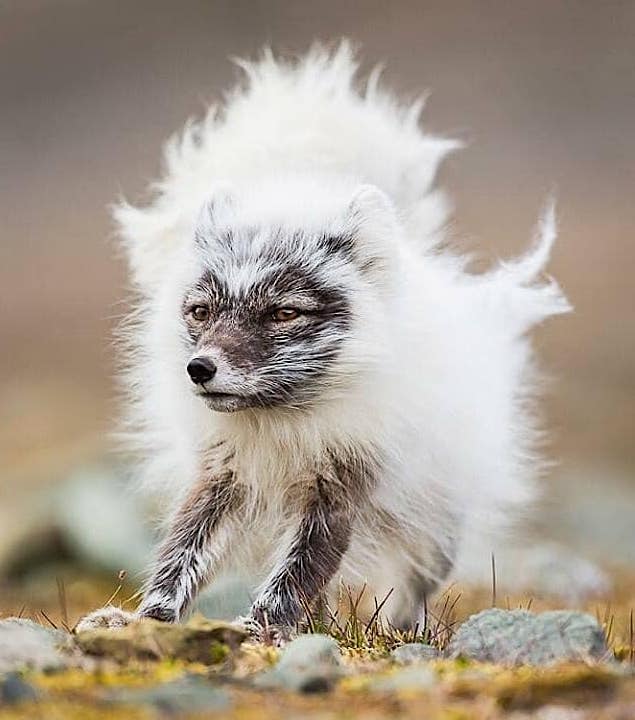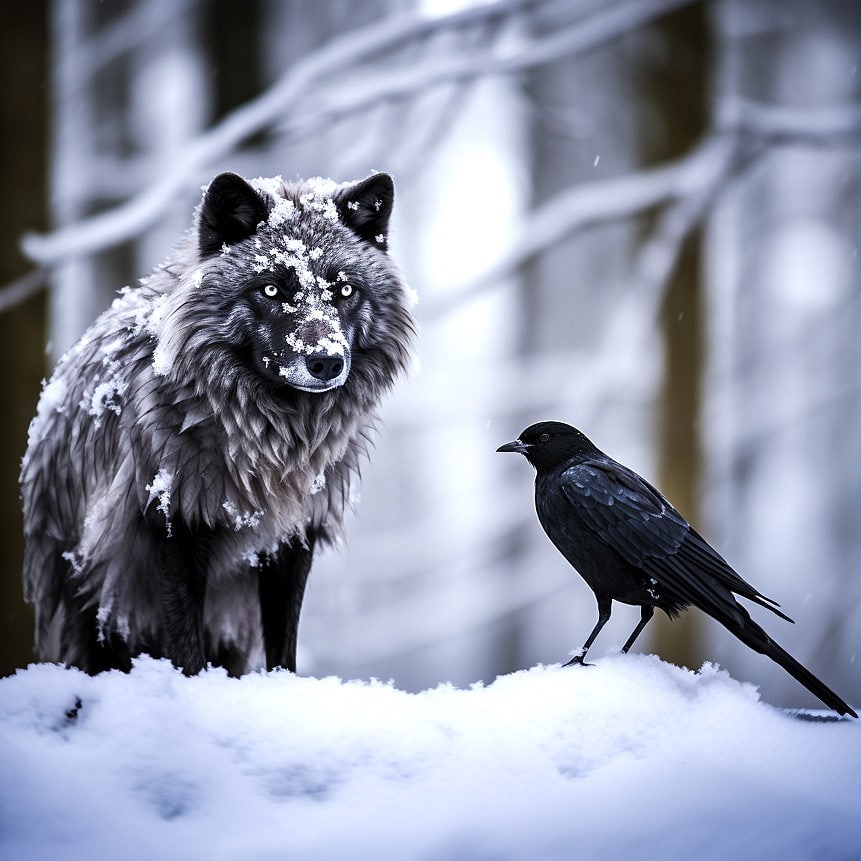.....No. It is an Arctic Fox!

Photo: Kevin Morgans

These Arctic foxes is looking rather bedraggled but it’s a usual sight around the middle of May.
They have well adapted for the cold, surviving temperatures as low as −50 °C (−58 °F), but come summer, the winter coat has to go.
Arctic foxes have a thick layer of fur on their feet which helps muffle their footsteps making it harder for prey to hear them, and their feet are one of the first areas to shed. In fact, they are the only canid that grows fur over their foot pads. They also have something called “counter-current blood circulation” which reduces blood flow to their feet to ensure they don’t get frostbite.
Their white coats make it difficult for predators such as wolves, polar bears, and golden eagles to spot them among the ice and snow. With no snow in summer they would be easily seen so after they lose their white winter coat they appear brown or black which helps them blend into the surroundings.
The Arctic Fox is often on the hunt for food and they will eat small rodents called lemmings, but they also eat anything else they can find! Insects, berries, and even the droppings of other animals! uugh
Artic Foxes can be found in Alaska, Canada, Russia, Greenland and Iceland and other arctic locations.
Thankfully Arctic Foxes are least as ‘least concern’ on the IUCN Red List.








